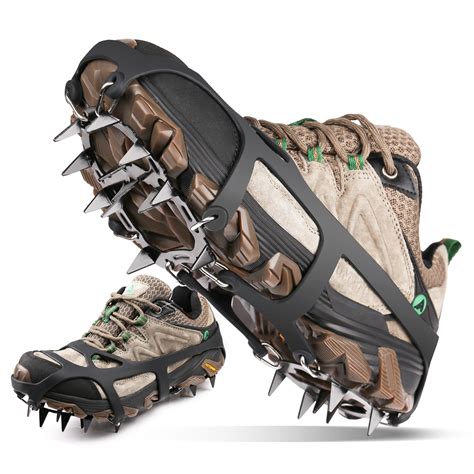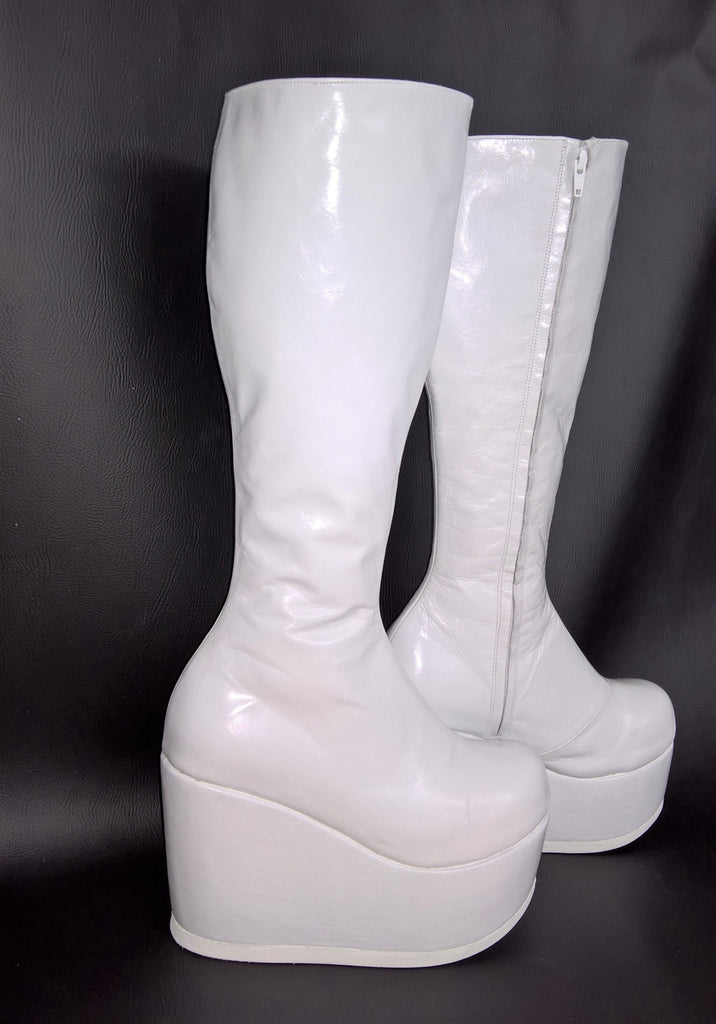5 Tips Walking Boots Ice

Walking on ice can be a daunting task, especially when it comes to choosing the right footwear. The key to a safe and enjoyable winter experience lies in selecting walking boots that are specifically designed to handle icy conditions. Here are five tips to help you pick the perfect pair of walking boots for ice:
1. Look for Traction and Grip
The most critical feature of walking boots for ice is their ability to provide traction. Boots with deep, aggressively patterned treads are designed to dig into the ice, reducing the likelihood of slipping. Additionally, look for boots with rubber compounds that remain flexible in cold temperatures. This flexibility allows the tread to maintain contact with the ice, enhancing grip. Some boots also feature specialized outsoles with built-in micro-spikes or studs that provide extra traction on smooth ice.
2. Insulation and Warmth
Insulation is vital for walking boots intended for icy conditions. Cold feet can quickly become uncomfortable and even lead to hypothermia. Look for boots with good insulation properties, such as those lined with Thinsulate or similar technologies. These materials help keep your feet warm without adding bulk. Furthermore, ensure the boots are waterproof to prevent moisture from entering and making your feet cold.
3. Waterproofing and Breathability
While insulation keeps your feet warm, waterproofing is essential to keep them dry. Ice and snow are wet, and walking through them can quickly soak through boots that are not properly sealed. Waterproof membranes like Gore-Tex or eVent are highly effective at keeping water out while allowing moisture from your feet to escape, preventing the buildup of sweat that can make your feet cold.
4. Ankle Support
Ice can be unpredictable, and a misstep can lead to a twisted ankle. High-cut boots that extend above the ankle provide additional support and can help prevent such injuries. They also offer better protection against deep snow and icy water. For hiking or more rugged terrains, the additional support can be particularly beneficial.
5. Adjustability and Fit
Finally, the fit of your boots is crucial. Boots that are too tight can restrict blood flow and make your feet cold, while boots that are too loose can cause blisters. Look for boots with adjustable lacing systems that allow you to customize the fit to your foot. Additionally, consider boots with gusseted tongues to keep debris out and provide a more secure fit.
In conclusion, selecting the right walking boots for ice involves considering several key factors: traction, insulation, waterproofing, ankle support, and fit. By prioritizing these aspects, you can ensure a safer and more enjoyable experience walking on ice. Remember, safety should always be your top priority, so don’t hesitate to invest in high-quality boots designed for icy conditions.
Pros of Investing in High-Quality Walking Boots for Ice:
- Enhanced safety with better traction and ankle support
- Improved comfort through insulation and waterproofing
- Longer durability compared to cheaper alternatives
Cons:
- Higher initial cost
- Potentially heavier due to added features
For those interested in further enhancing their winter walking experience, additional accessories such as crampons for more extreme ice conditions or gaiters to keep snow out of your boots can be worth considering. However, for most casual walks on icy paths, a good pair of walking boots will be your most valuable investment.
What are the best materials for walking boots in icy conditions?
+Materials that provide flexibility, warmth, and waterproofing are ideal. Rubber outsoles for grip, insulation like Thinsulate for warmth, and waterproof membranes such as Gore-Tex for dryness are highly recommended.
How do I maintain my walking boots to ensure they last longer?
+Regularly clean your boots with a soft brush and mild soap, condition the leather if applicable, and apply a waterproofing treatment. Allow them to dry naturally, away from direct heat.
Can walking boots for ice be used in warmer conditions?
+While possible, it’s not recommended as the insulation and waterproofing can make your feet overly warm and sweaty in warmer conditions. Consider having a separate pair for warmer weather.



